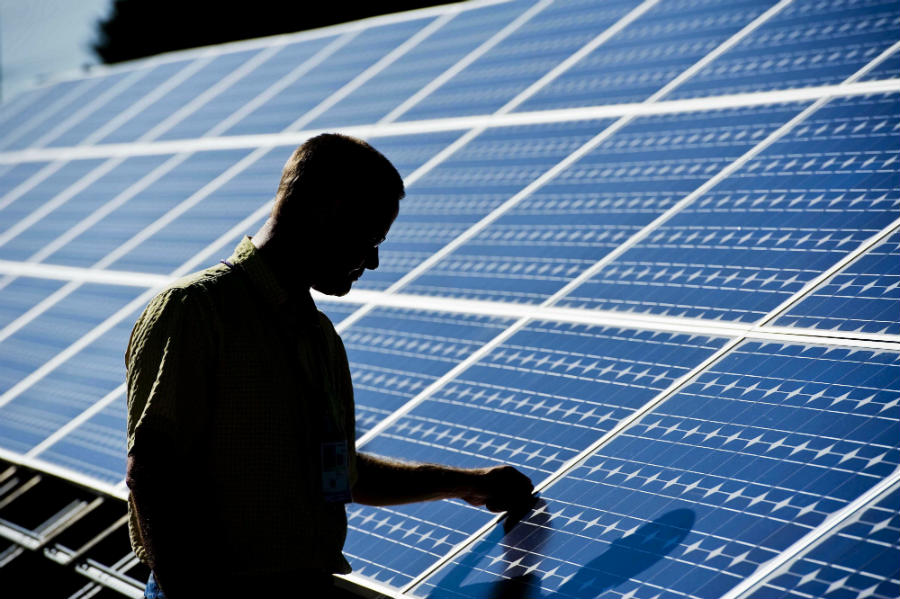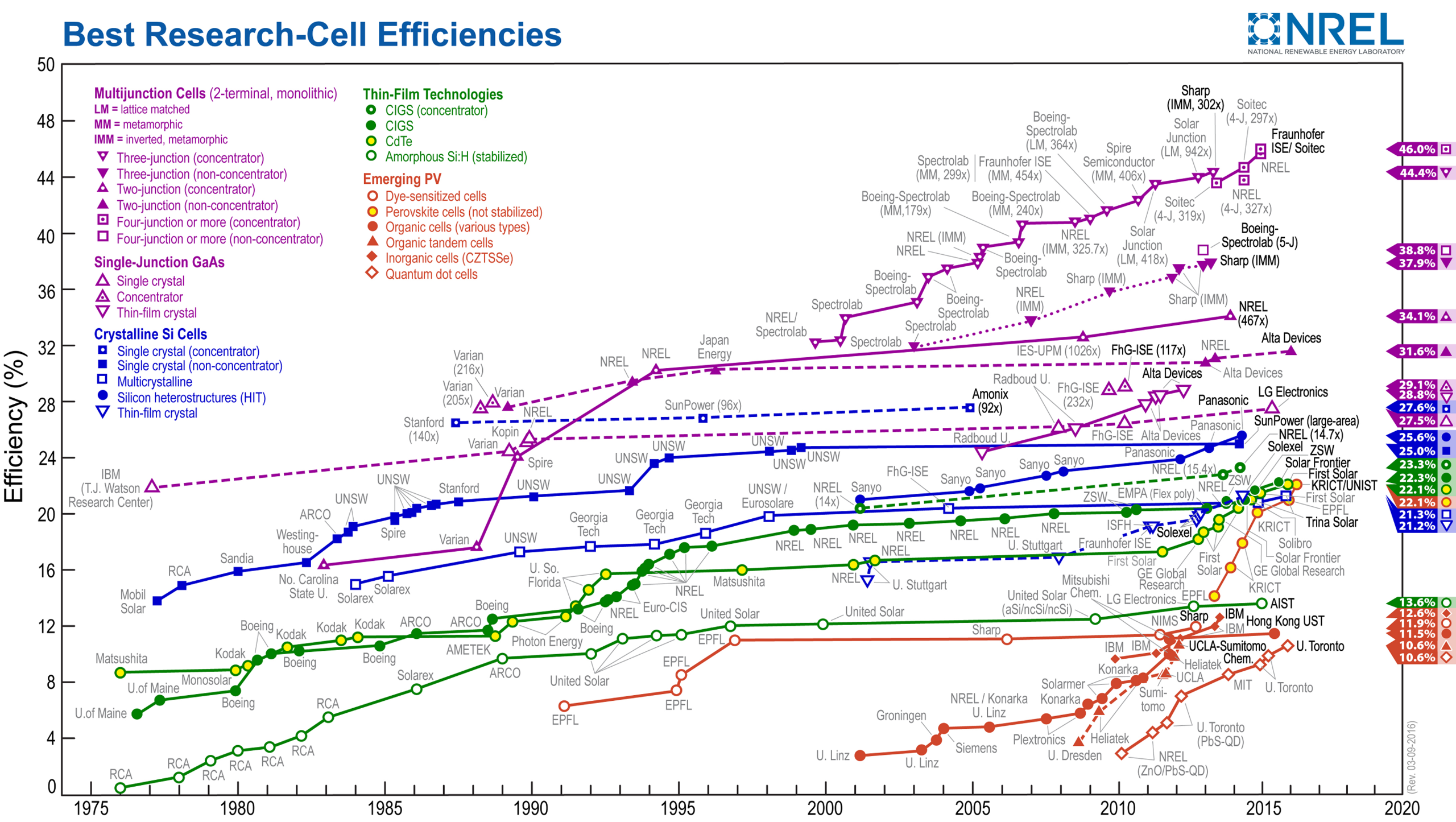How Do Solar Panels Work?

How do solar panels work and how do solar panels actually create power? How does sunlight allow us to create power?
Once upon a time, in a land and time far far away (just about 2,700 years ago), lived a poor a little ant. Little did it know its life would soon come to an end by a curious child (or even perhaps a dumbfounded philosopher), armed with malicious/scientifically designed magnifying glass.
That’s right, ladies and gentlemen– the use of solar power dates back to thousands of years ago. In a way, using a lens to intensify the power of sunlight is at the very core of converting light into solar energy. Naturally, we’ve made great progress since the times of Romans and Greeks using sunlight and mirrors to light torches. Today, the use of photovoltaics (a fancy term which will be explained later) has been increasing on average by 40% since 2000 according to Renewables International magazine, and the use of concentrated solar power is also reaching new heights in terms of worldwide expansion.
Getting confused already? As to quote a charming young woman, let’s go back to our poor deceased ant and start at the very beginning– since it is, after all, a very good place to start.
All light, including light emanating from our celestial Sun, is energy. This energy will usually turn to heat once light hits an object. Anyone who’s ever gone to the beach is familiar with this concept– standing in Sun warms you up. Solar cells, however, waste their precious time on heat. They are designed to make electricity out of sunlight. Sunlight, composed of quantized bundles of light called photons, won’t cause the molecules of a solar cell to vibrate and release heat. Rather, a photon will get absorbed, break the bond of a molecule and release an electron. Repeat that a hundred times or more and we get an electrical current. Naturally, it’s a tad more complicated than this.
By constructing a solar cell with a type of semiconducting material, light doesn’t turn into heat but rather produces an electrical current. It’s this electrical current that can be harnessed as power.
What do we mean by “semiconducting materials”?
Silicon, for instance, (which was used primarily in the older days of solar technology), has four electrons in its outer orbital. Not only does this render silicon ideal for the formation of crystals with its ability to easily form lattices, but it also means that silicon has no free electrons to create an electrical current. However, by a mechanism known as “doping”, an impurity (such as phosphorous or arsenic) is added to a silicon crystal. When all is said and done (and bonded as best as atomically possible), a lonesome electron will be left all by itself. And as you hopefully have just read, (or if you were partially awake during your high school physics classes), you’ll remember that a flow of electrons means electrical current.
By the way, we’ve just defined a very important term up there.

Photovoltaics is the process of converting sunlight into electricity with the use of semiconducting materials that exhibit what’s known as the photovoltaic effect.
And what’s the photovoltaic effect? Kind of what we just stated– the creation of electricity in some type of material when the said-material is exposed to light. So semi-conducting materials are utilized for the construction of photovoltaic cells, also known as solar cells. It’s these solar cells that are able to generate electricity out of sunlight.
By the way, the origins of the word photovoltaic comes from the word photos (which translates as light in Greek) and voltaic, from the name of the Italian scientist Count Alessandro Volta, a pioneer in the world of electricity and inventor of the first battery– the Voltaic Pile.
While Emanuel Sachs of the Massachusetts Institute of Technology has achieved groundbreaking work in improving the efficiency of solar cells made of multicrystalline silicon, today silicon is no longer really used, primarily due to the costs associated with growing large crystals. The solar industry has turned to newer technologies, including what is known as “thin-film” solar technology.
The thinness of a solar cell is a defining characteristic of photovoltaic technology.
So what do we mean by that? As a point of reference, a silicon solar cell has layers with a thickness of about 350 microns (where 1 micron is one millionth of a meter or 1/1,000 000 m). It’s these layers that are responsible for absorbing sunlight, so the thicker the layer, the less efficient a solar cell becomes. Don’t forget that light can undergo refraction, reflection and transmission instead of simply being absorbed by a solar cell. So a larger thickness can represent more obstacles to overcome for the happy photons that strike a solar cell with full force.
In comparison to their archaic silicon cousins, thin-film solar cells have light-absorbing layers that are only about one micron thick. As their names implies, these types of solar cells are constructed by depositing thin layers of light-absorbing material onto a type of substrate (also called a “wafer”)– whether it be plastic, metal or coated glass.
These thin semiconductor wafers are treated such that they form an electric field, which, by definition, has opposite polarity (meaning one side of the wafer is negative, while the other is positive). Thus electrons are freed (or knocked out from their atomic configuration) when energy in the form of sunlight strikes the solar cell. A proper placement of electrical conductors will form an electrical circuit, which will force electrons to move in a loop. And once again, voilà: we now have electricity.
“The fundamental advantage of thin film comes in the form of the amount of material you need,” states Electrical Engineer Jeff Britt, Chief Technology Officer of Global Solar Energy, a thin-film manufacturing company in Tucson, Arizona. According to him, only one or two microns of solar cell thickness can absorb just about 98 percent of sunlight, which is at least a hundred times less material required by silicon solar cells to absorb the same amount of light.
Naturally, using only one solar cell won’t do much. Electrically connecting a number of photovoltaic cells together and mounting them in a supporting frame creates a photovoltaic module, which together combine to form solar panels. Each photovoltaic panel supplies electricity at a specific voltage. The amount of sunlight absorbed by a solar panel within a specific timeframe translate into power; so by applying the good old unshakable laws of physics, dividing power by voltage will give us an approximation of the resulting electrical current.
It doesn’t stop there. Arrays can also be assembled by wiring numerous solar panels together. Depending on what voltage and current are needed, the panels can be electrically connected in a series or parallel configuration. Generally (and logically) speaking, the larger a solar panel is, the more light can be absorbed, and the more electricity can be produced.
Other types of solar energy technologies are being investigated, such as the innovative work of Harvard University’s Faculty of Arts and Sciences, Harvard Medical School and the Wyss Institute for Biologically Inspired Engineering at Harvard University, which announced in early 2015 the invention of a “bionic leaf” developed to adopt the efficient process of photosynthesis in plants.
Solar efficiency refers to what portion of sunlight energy will be converted to electricity via the use of photovoltaic technology.
A high solar efficiency allows competing solar companies to offer lower power costs for their customers. Last year Elon Musk announced the manufacturing of a new solar panel that could produce power at a low cost of $0.55 per watt. These solar panels can apparently reach a 22.5% efficiency, which slightly outdoes their competitor SunPower by a mere one percent.
Interestingly enough, there are multiple types of solar cells that reach extremely high efficiencies, but these technologies today are not affordable or have yet to be put in production. The chart below, assembled by the National Renewable Energy Laboratory, depicts a reported timeline of solar cell energy conversion efficiencies.

Photo Credit: via Wikimedia under CC license
Regardless of the type of semiconductor material used, common measures implemented to increase the efficiency of a solar array involve ensuring solar panels are perpendicularly facing the Sun to optimize light absorption, maximizing what is known as the fill factor, (an engineering term that refers to the ratio of how much power can be obtained in reference to voltage and current), or implementing the use of solar trackers, which enable a solar panel to rotate and always directly face the Sun.
According to Physicist Steven Chu, director of Lawrence Berkeley National Laboratory, Earth receives about 4.3 x 1020 joules (J) of solar energy per hour– enough to provide all energy needs on our planet for a year.
In the past, solar panels primarily involved reducing the costs of running electricity in a residence or business, and solar energy was pursued when a shortage of other sources (coal and fossil fuels) was seen as a possibility.
Today, as human beings become more environmentally friendly and budget-conscious, solar energy is gaining more and more traction in all types of industrial, private and commercial sectors. These include solar exploration, impressive gadgets, the construction of solar-powered airports across the globe and many more.
